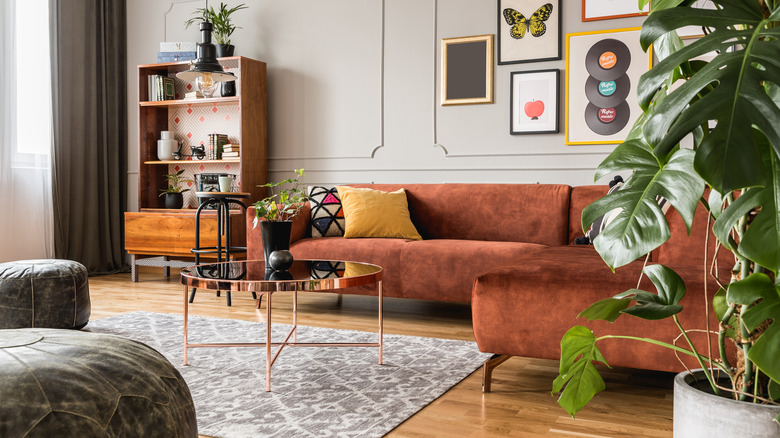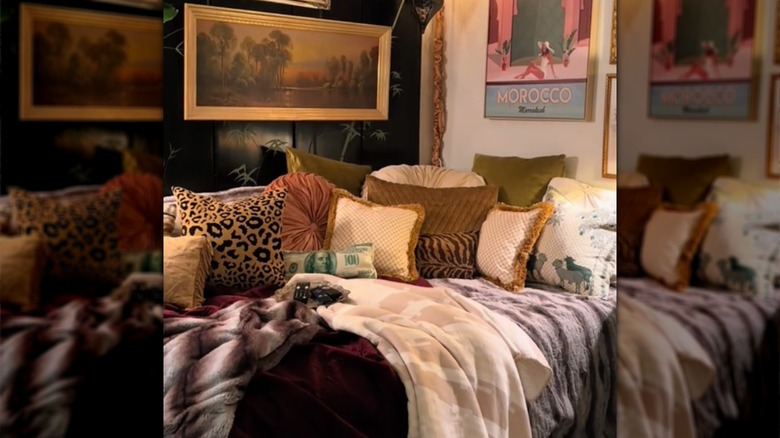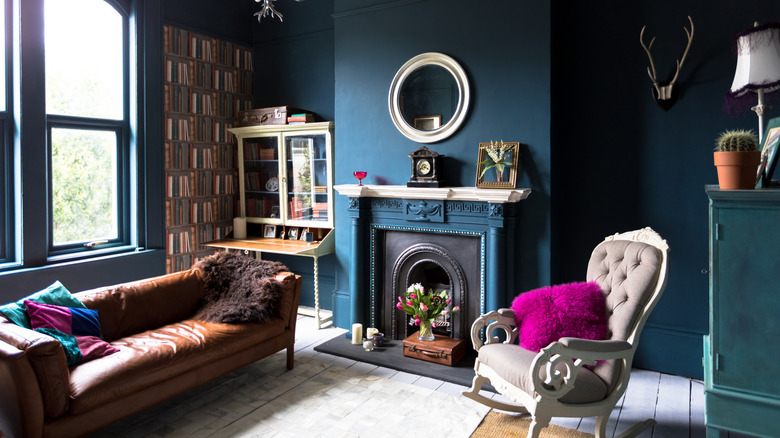Eclectic Vs Maximalist: What's The Difference And How To Choose Your Style
Whether you're starting fresh or switching things up, applying interior design styles to your own home can be intimidating. But two trending styles are more approachable than most: eclectic design and maximalism. These have common attributes and often get lumped together, but they're distinct in important ways, and one may call to you more than the other. While maximalism involves saturating a space with tons of elements, eclectic design is more about the variety of those elements.
Choosing your design style is all about following your gut. Look for inspiration in real homes, paying attention to which rooms you enjoy the most and figuring out what your favorite spaces have in common. What colors, patterns, and furniture pieces are you most drawn to? Browsing online is also a great method since the photos will often come with captions or tags that describe the styles. And as both maximalism and eclectic design make clear, there's no reason you can't combine styles into your own personal haven.
Both eclectic and maximalist styles continue to be popular in 2025 over more homogeneous home designs. "People want their homes to feel alive and personal, with pieces that have history, character, and personality," AD100 interior designer Brigette Romanek told Vogue. Maximalism and eclectic design allow freedom to mix styles, colors, patterns, and textures, breaking some traditional design "rules." This makes more room for individual expression, creating perfectly-imperfect spaces that feel welcoming and homey. Both maximalist and eclectic homes typically feature lots of visual interest throughout. But eclectic design is more curated and may even be minimal, while maximalist homes tend to be packed full without much negative space.
In maximalism, more is more
Maximalism is, in short, the opposite of minimalism. There are no strict rules in this style — no need to restrict yourself to a certain palette, design era, aesthetic, or number of elements. In fact, the opposite is encouraged. Maximalist design often mixes vibrant, ornate colors and patterns, layers lots of textures, and allows beloved items to remain on open display rather than sit neatly stored away. While many other interior design styles leave a certain amount of negative space to avoid an overwhelming look, maximalist spaces can easily make use of every single available surface, even wall moldings and trims.
Maximalist rooms still require balance, however; there's a fine line between maximalist and messy, and homes need to be functional as well as beautiful. Consider starting with one statement piece, then building the rest of the room around that, maintaining a sense of continuity and anchoring the design. Rather than buying things just to fill up the space, take the time to find items you truly love and place them with care, maintaining the overall harmony of the room. Continue reviewing the space, how it makes you feel, and how easy it is to live in it over time. You can always remove items that don't seem to fit.
If you're a beginner to maximalist decor or not sure if it's for you, consider starting with one or two rooms. You can also experiment with adding just a few of your favorite elements from maximalism, such as a splash of vibrant colors or patterns.
Eclectic design doesn't mean anything goes
Eclectic design focuses on diversity, mixing disparate elements from a range of design styles and eras. The elements may seem random, but in reality, they are carefully curated to form a cohesive, balanced space. One eclectic room might easily look nothing like another, because the result depends on the specific mix of objects, colors, patterns, and textures. Often, there is a unifying theme, like a material, style, or color that repeats throughout. Two subsets of eclectic design are boho eclectic and eclectic minimalism (proof that eclectic design doesn't always overlap with maximalist design).
When designing an eclectic space, start with a neutral foundation and a main accent color. These will become the backdrop and reference point for each other element added into the space. Similarly, it can help to choose a focal statement piece, like a favorite piece of art or furniture, to which you can anchor other items. Then you're free to choose different patterns, shapes, textures, and so on, adding pieces that you love or that tell a story. Don't worry about "matching" per se, but make sure to build cohesion and unity by repeating colors, textures, or a common theme or motif throughout.
With eclectic design, it's important to practice restraint, as over-filling the space or adding too many contrasting styles can create a chaotic or random feel. Too much stuff also makes it harder to appreciate each element. Leave some negative space (for example, an empty corner or table). If you like, you can rotate pieces seasonally so that each of your favorites has time to shine without the space becoming cluttered.


